01:41
China’s civil aviation authorities granted a Production Certificate (PC) to the homegrown EH216-S passenger-carrying pilotless electric vertical takeoff and landing (eVTOL) aircraft on Sunday.
The certificate, issued by the Civil Aviation Administration of China (CAAC), is the world’s first PC granted in the global eVTOL industry, marking a significant leap towards mass production for the eVTOL aircraft and the following commercial operations.
The EH216-S, developed and produced by Guangzhou-based EHang, the world’s leading urban air mobility (UAM) technology platform company, obtained the Type Certificate (TC) and standard airworthiness certificate (AC) from the CAAC last year, according to the company.
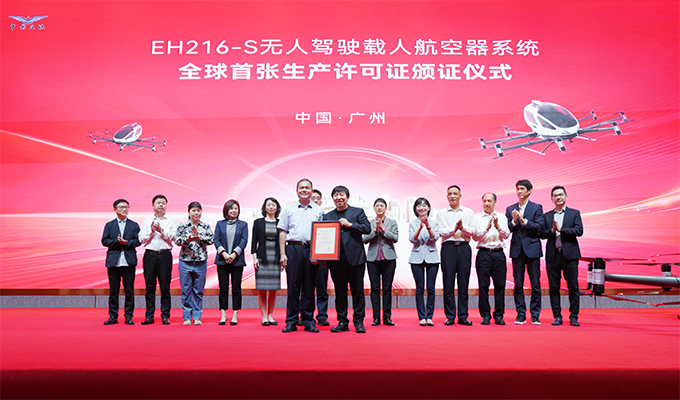 The CAAC issues the production certificate for EH216-S to EHang, Guangzhou City, south China’s Guangdong Province, March 7, 2024. /EHang
The CAAC issues the production certificate for EH216-S to EHang, Guangzhou City, south China’s Guangdong Province, March 7, 2024. /EHang
The CAAC issues the production certificate for EH216-S to EHang, Guangzhou City, south China’s Guangdong Province, March 7, 2024. /EHang
The aircraft can be widely applied in fields like passenger transportation, air tours, air logistics and medical emergency response. The mass production quality management system for the EH216-S encompasses raw materials, supplier management, production organization, production quality control, aircraft pre-delivery test and after-sales repair and maintenance, the company said.
The system establishes clear guidelines and documentation for each step in the production procedure, ensuring comprehensive traceability and safety control to guarantee that each aircraft and its components rolling off the production line strictly comply with the approved type design and safety requirements.
The aircraft is 1.93 meters tall and 5.73 meters wide, with a maximum takeoff weight of 620 kilograms, which is designed to carry two passengers with luggage. With eight foldable arms and 16 propellers, it can travel for up to 30 kilometers at a maximum speed of 130 kilometers per hour.
 A view of China’s homegrown EH216-S passenger-carrying pilotless electric vertical takeoff and landing (eVTOL) aircraft, Guangzhou City, south China’s Guangdong Province. /CFP
A view of China’s homegrown EH216-S passenger-carrying pilotless electric vertical takeoff and landing (eVTOL) aircraft, Guangzhou City, south China’s Guangdong Province. /CFP
A view of China’s homegrown EH216-S passenger-carrying pilotless electric vertical takeoff and landing (eVTOL) aircraft, Guangzhou City, south China’s Guangdong Province. /CFP
Low-altitude economy boom
The low-altitude economy is an economic concept that relies on low-altitude airspace, with the general aviation sector playing a dominant role. It involves economic sectors such as low-altitude flight, air tourism, passenger transportation, general aviation services, scientific research and education, among others.
Xu Dan, deputy district mayor of the Huangpu district in Guangzhou, the capital of Guangdong Province, said that “obtaining the production certificate marks a significant stride towards industrializing our city’s low-altitude economy manufacturing sector.”
Hu Huazhi, founder, chairman and CEO of Ehang, echoed that by saying that “the issuance of the production certificate is pivotal for the EH216-S as it opens the door to mass production and is a crucial step for our advancement towards commercial operations.”
According to Hu, the Guangzhou-based company’s vision is to introduce a safe and reliable pilotless eVTOL aircraft to the global market, thereby offering everyone safe, autonomous and eco-friendly air mobility services.
China has stepped up endeavors to push for the low-altitude economy in recent years, and the country is going to hold the 8th Drone World Congress 2024 from May 24 to 26 in the southern metropolis of Shenzhen. The congress, with a theme of “Low-altitude Economy, The Future,” will see the participation of nearly 500 enterprises from home and abroad, according to the organizers.

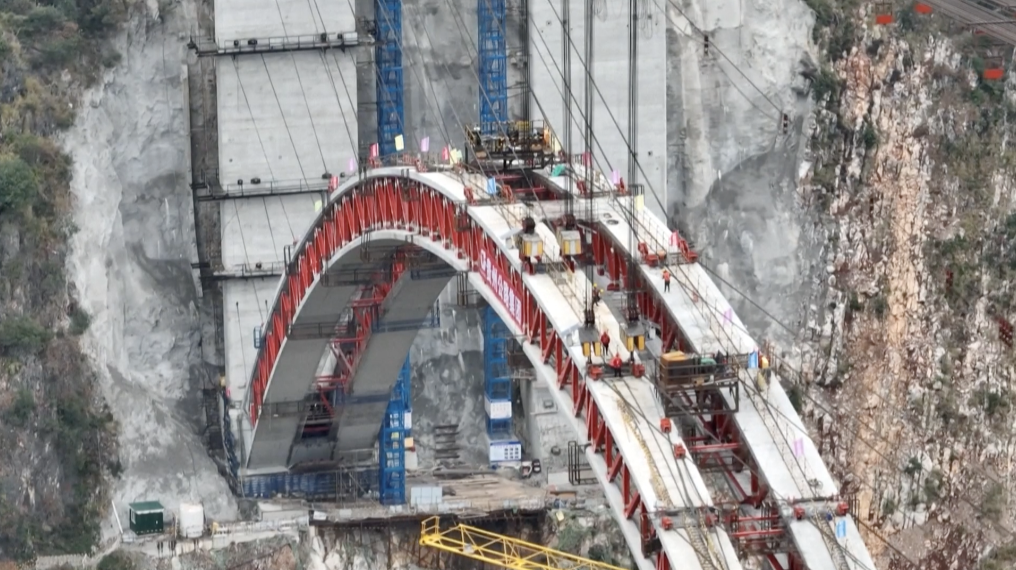
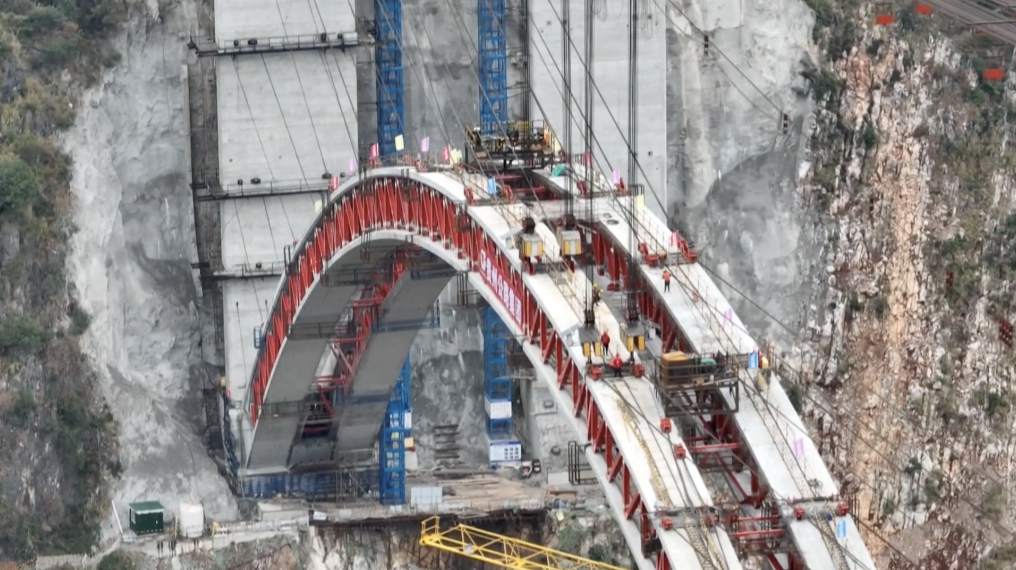
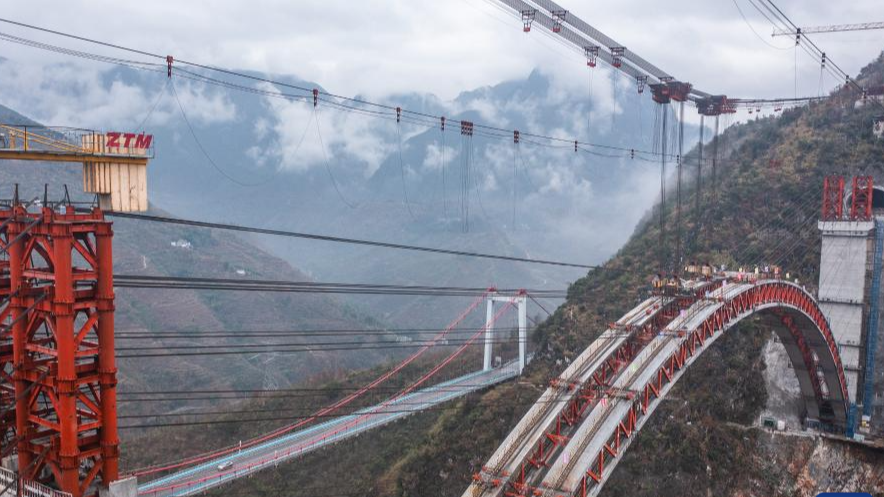 The construction site of Wumengshan grand bridge on Nayong-Qinglong Expressway in southwest China’s Guizhou Province, January 11, 2024. /Xinhua
The construction site of Wumengshan grand bridge on Nayong-Qinglong Expressway in southwest China’s Guizhou Province, January 11, 2024. /Xinhua  The construction site of Wumengshan grand bridge on Nayong-Qinglong Expressway in southwest China’s Guizhou Province, January 11, 2024. /Xinhua
The construction site of Wumengshan grand bridge on Nayong-Qinglong Expressway in southwest China’s Guizhou Province, January 11, 2024. /Xinhua 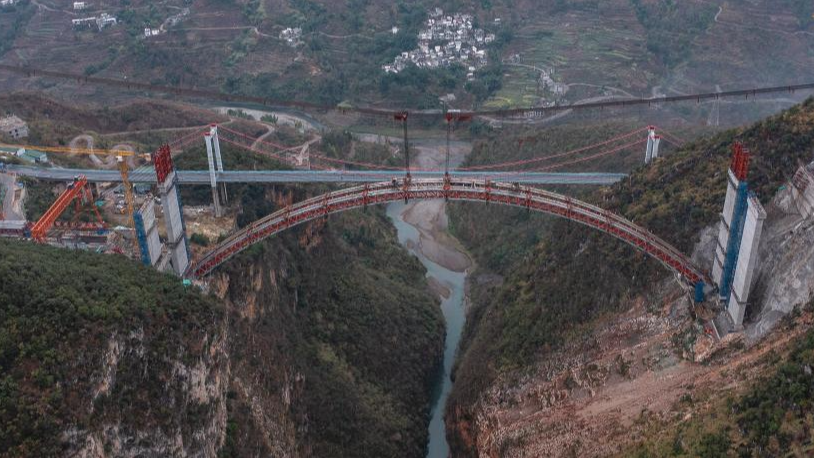 The construction site of Wumengshan grand bridge on Nayong-Qinglong Expressway in southwest China’s Guizhou Province, January 11, 2024. /Xinhua
The construction site of Wumengshan grand bridge on Nayong-Qinglong Expressway in southwest China’s Guizhou Province, January 11, 2024. /Xinhua 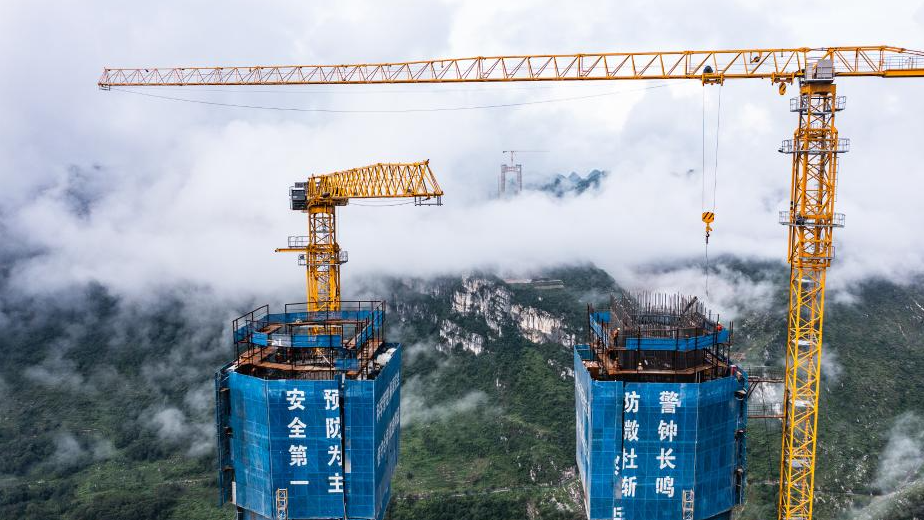 The construction site of the Huajiang grand canyon bridge in southwest China’s Guizhou Province, August 2, 2023. /Xinhua
The construction site of the Huajiang grand canyon bridge in southwest China’s Guizhou Province, August 2, 2023. /Xinhua  The construction site of the Huajiang grand canyon bridge in southwest China’s Guizhou Province, August 2, 2023. /Xinhua
The construction site of the Huajiang grand canyon bridge in southwest China’s Guizhou Province, August 2, 2023. /Xinhua 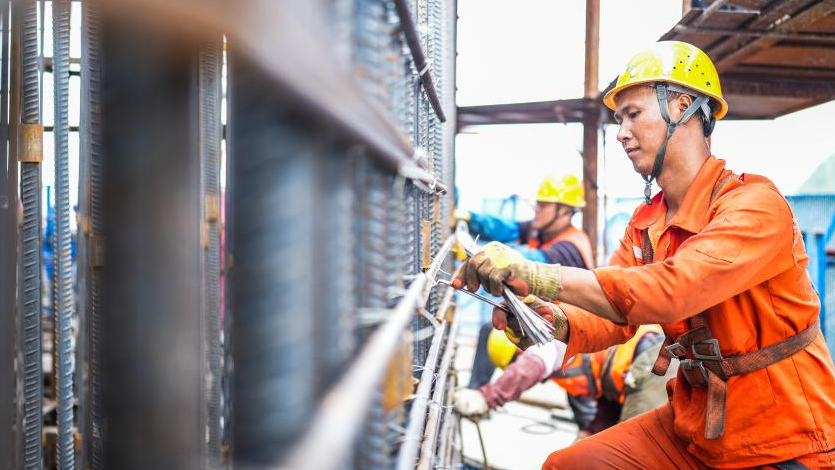 Workers at the construction site of the Huajiang grand canyon bridge in southwest China’s Guizhou Province, August 3, 2023. /Xinhua
Workers at the construction site of the Huajiang grand canyon bridge in southwest China’s Guizhou Province, August 3, 2023. /Xinhua  A view of the bridge across Jiangjie River in southwest China’s Guizhou Province. /CFP
A view of the bridge across Jiangjie River in southwest China’s Guizhou Province. /CFP  A view of the bridge across Jiangjie River in southwest China’s Guizhou Province. /CFP
A view of the bridge across Jiangjie River in southwest China’s Guizhou Province. /CFP  A view of the bridge across Jiangjie River in southwest China’s Guizhou Province. /CFP
A view of the bridge across Jiangjie River in southwest China’s Guizhou Province. /CFP 


 The United Nations expressed concern on Monday about the effects of the drought in Southeast Africa, leading Zimbabwe to become the third country in the region to announce a state of emergency. /CFP
The United Nations expressed concern on Monday about the effects of the drought in Southeast Africa, leading Zimbabwe to become the third country in the region to announce a state of emergency. /CFP 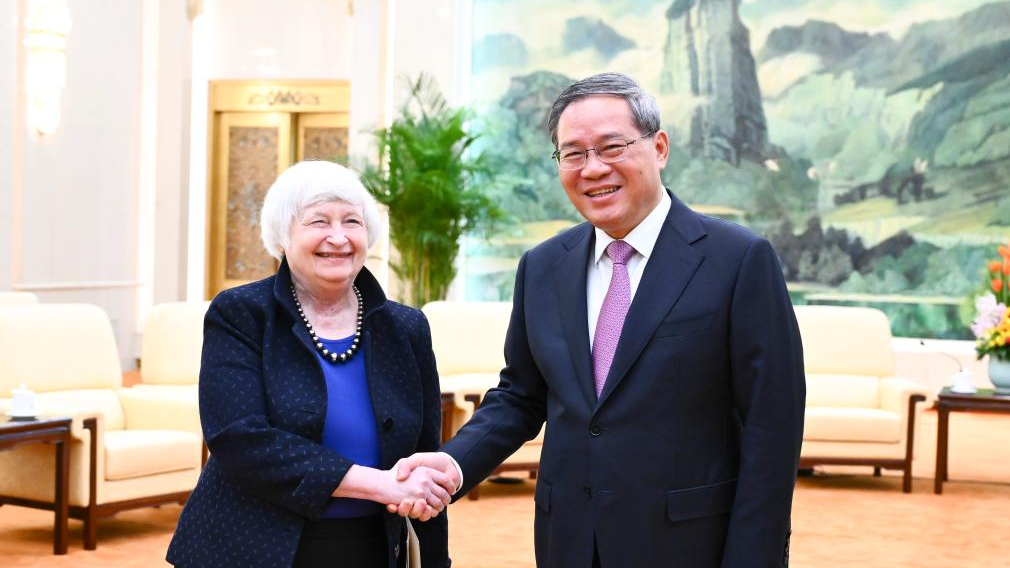
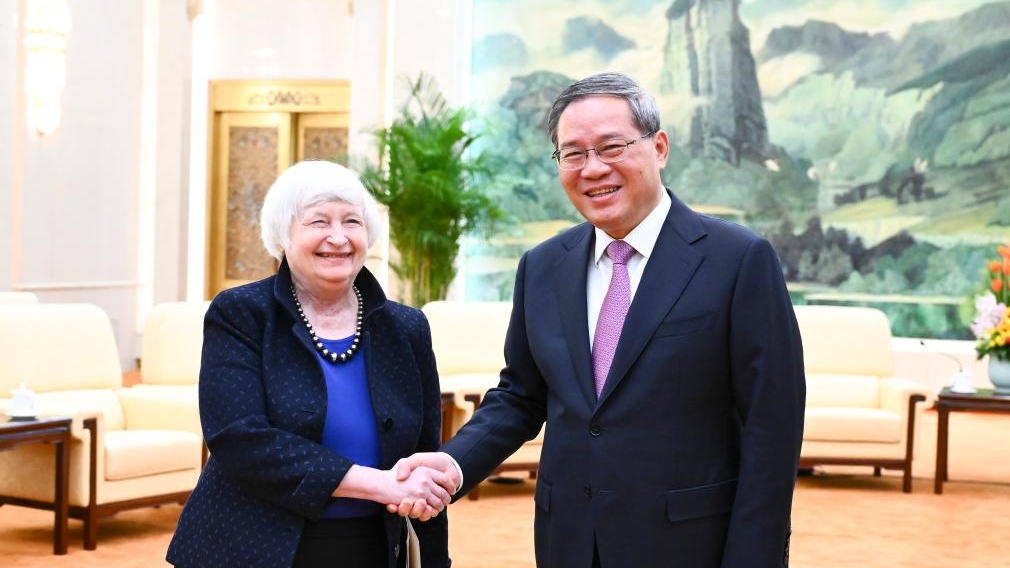 Chinese Premier Li Qiang meets with U.S. Treasury Secretary Janet Yellen at the Great Hall of the People in Beijing, capital of China, April 7, 2024. /Xinhua
Chinese Premier Li Qiang meets with U.S. Treasury Secretary Janet Yellen at the Great Hall of the People in Beijing, capital of China, April 7, 2024. /Xinhua 
 A tour guide introduces the stories of Dazu Rock Carvings to foreign visitors in Chongqing on March 27. TANG YI/XINHUA
A tour guide introduces the stories of Dazu Rock Carvings to foreign visitors in Chongqing on March 27. TANG YI/XINHUA 
 A staff member works on the production line of a semiconductor production company in Yangxin county, Binzhou city, East China’s Shandong province on April 1, 2024. [Photo/VCG]
A staff member works on the production line of a semiconductor production company in Yangxin county, Binzhou city, East China’s Shandong province on April 1, 2024. [Photo/VCG] 


